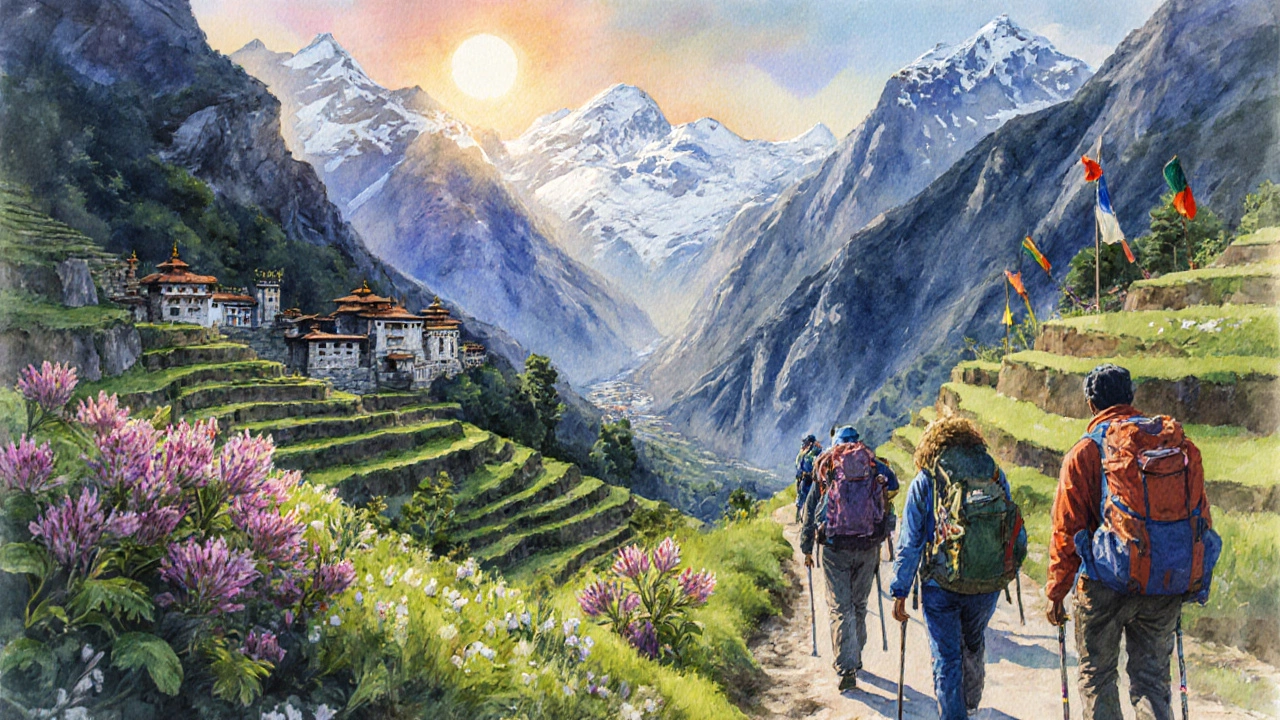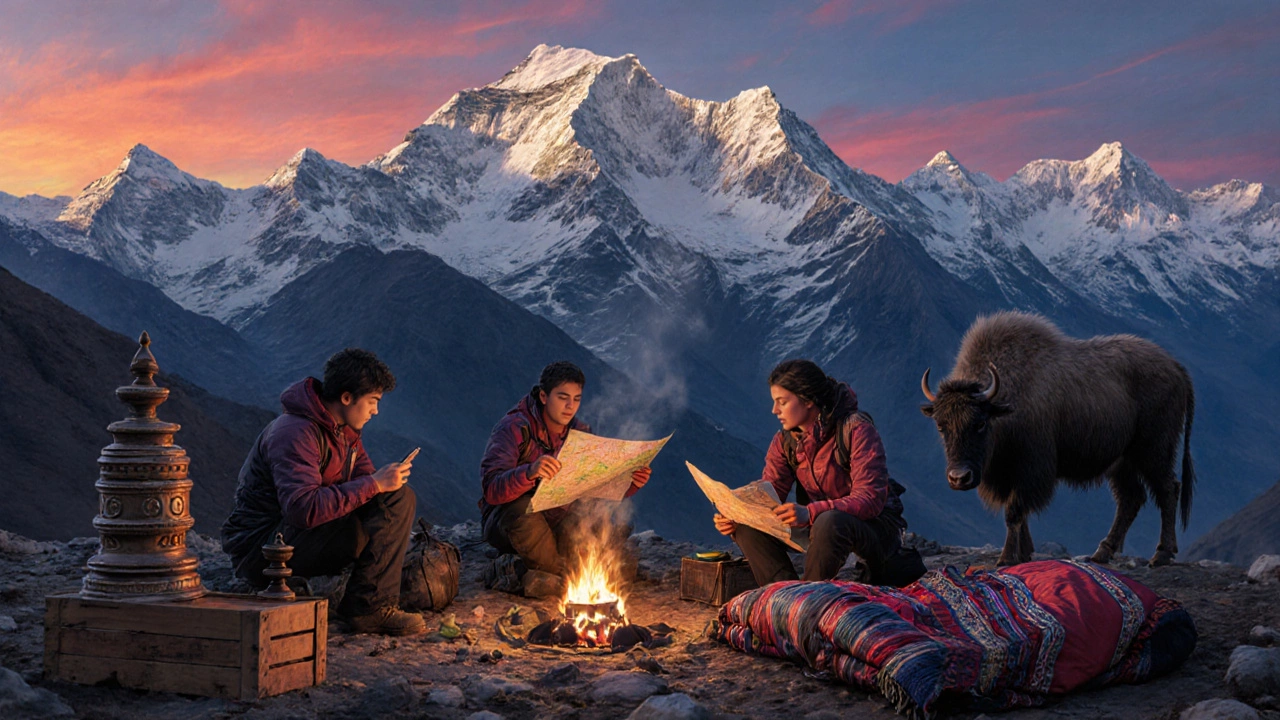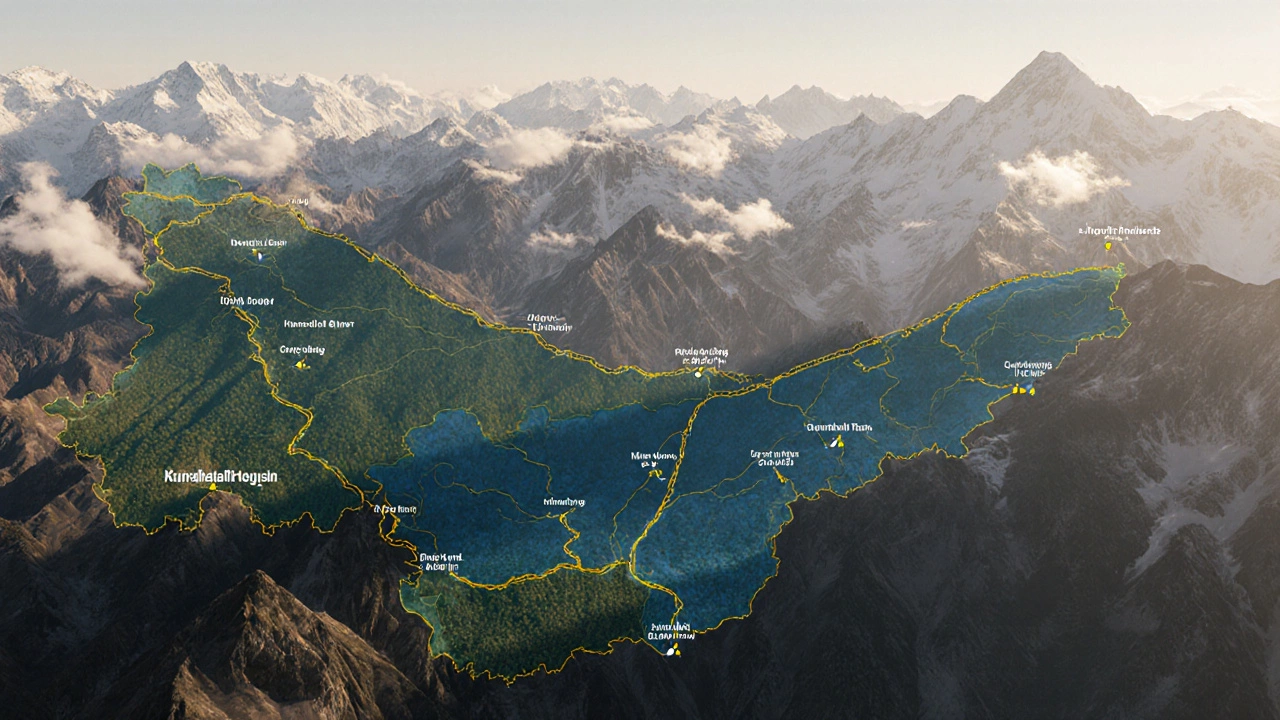Great Himalayan Trail Explorer
Total Distance
4,500 km
Equivalent to New York to Los Angeles
Duration
150-180 days
Typically spread across 5-6 months
Trail Segments
Western Segment
J&K to Himachal
Central Segment
Himachal to Uttarakhand
Eastern Segment
Uttarakhand to Sikkim
Northeastern Segment
Sikkim to Arunachal
Western Segment (J&K to Himachal):
- Distance: ~1,100 km
- Duration: 30-40 days
- Key Regions: Jammu & Kashmir, Himachal Pradesh
- Best Season: April-June
This segment begins in the foothills of Jammu & Kashmir and winds through the majestic mountains of Himachal Pradesh, offering diverse landscapes from lush valleys to snow-capped peaks.
Altitude Range
300m - 6,200m
States Covered
7 States
Cultural Diversity
50+ Ethnic Groups
- Define your segment ✓
- Secure permits ○
- Choose support model ○
- Prep gear ○
- Train physically ○
- Map resupply points ○
- Plan for emergencies ○
When you hear "largest adventure" in India, most people picture a trek that stretches across mountains, deserts, and valleys for weeks on end. In reality, the title belongs to a single, epic route that dwarfs any other Indian adventure: the Great Himalayan Trail a multi‑season, cross‑country trek that spans the length of the Indian Himalayas. This guide breaks down why the GHT earns the "largest" badge, how to plan it, and which other massive adventures can satisfy a craving for scale.
What Makes an Adventure “Largest”?
Before naming a champion, it helps to set the criteria that define "largest" in adventure tourism:
- Distance covered - total kilometers or miles trekked, cycled, or paddled.
- Geographic diversity - number of states, ecosystems, or cultural zones crossed.
- Time commitment - typical duration from start to finish.
- Physical challenge - altitude gain, technical sections, and climate extremes.
- Logistical complexity - permits, resupply points, and support required.
Only one Indian adventure checks all the boxes.
The Great Himalayan Trail - India’s Ultimate Adventure
The Great Himalayan Trail (GHT) stretches roughly 4,500 km from the western foothills of Jammu & Kashmir to the eastern reaches of Arunachal Pradesh. It weaves through seven states: Jammu & Kashmir, Himachal Pradesh, Uttarakhand, Uttar Pradesh (the high Himalaya fringe), Sikkim, West Bengal, and Arunachal Pradesh. The trail follows ancient trade routes, pilgrimage paths, and pristine valley floors, climbing above 6,000 meters in spots like Kangra Valley and Ladakh’s Zanskar Range.
Key attributes that cement its "largest" status:
- Length: 4,500 km, equivalent to walking from New York to Los Angeles.
- Altitude range: From 300m in the foothills of Shivalik Hills to over 6,200m at Kangtep Pass.
- Duration: Most thru‑hikers spread the trek over 150-180 days, with built‑in rest weeks in towns like Manali, Leh, and Gangtok.
- Cultural rope: Over 50 distinct ethnic groups, 20 languages, and countless festivals dot the path.
- Logistics: Requires a mix of permits - wildlife, border, and trekking - plus coordination with local guides and homestays.
Because it touches every major Himalayan ecosystem, the GHT offers everything from alpine meadows and glacial rivers to subtropical forests. That breadth makes it the biggest single‑purpose adventure India can provide.

Planning Your GHT Expedition
Embarking on the Great Himalayan Trail isn’t a weekend decision. Below is a step‑by‑step blueprint that turns the massive idea into a doable plan.
- Define your segment: The full trail can be broken into four major legs - Western (J&K to Himachal), Central (Himachal to Uttarakhand), Eastern (Uttarakhand to Sikkim), and Northeastern (Sikkim to Arunachal). Most first‑timers choose one leg, typically the Central or Eastern segment.
- Secure permits: Apply for the Inner Line Permit (ILP) for Arunachal, a Protected Area Permit (PAP) for Ladakh, and wildlife permits for national parks like Great Himalayan National Park.
- Choose a support model: Solo, guided, or supported. Guided operators such as Himalayan Treks India provide porters, meals, and emergency evacuation.
- Prep your gear: High‑altitude boots, a 65L backpack, a four‑season sleeping bag, a lightweight stove, and a satellite communicator.
- Train physically: 2‑3 months of weekly hikes with weighted packs, plus cardio for endurance at altitude.
- Map your resupply points: Towns like Munsiyari, Rudraprayag, and Gangtok have grocery markets and guesthouses.
- Plan for emergencies: Register your itinerary with the Indian embassy, carry a first‑aid kit, and know the nearest PHC (Primary Health Centre) locations.
Following this checklist keeps the massive logistics manageable and lets you focus on the awe‑inspiring scenery.
Other Massive Adventures in India
If the Great Himalayan Trail feels too long or you prefer a different terrain, India still offers several other "large‑scale" adventures that span hundreds of kilometers.
| Adventure | Length (km) | Typical Duration | Key Regions | Best Season |
|---|---|---|---|---|
| Great Himalayan Trail | ~4,500 | 150‑180 days | J&K, Himachal, Uttarakhand, Sikkim, Arunachal | April‑October |
| Rajasthan Desert Safari Circuit | ~1,200 | 30‑45 days | Thar Desert, Jaisalmer, Bikaner | October‑March |
| Sunderbans Mangrove Expedition | ~850 (waterways) | 20‑25 days | West Bengal, Bangladesh border | November‑February |
Each route offers a distinct flavor: desert dunes, tidal mangroves, or soaring peaks. Yet none match the sheer scale of the GHT.
Quick Planning Checklist
- Pick a trail segment (Western, Central, Eastern, Northeastern)
- Apply for required permits at least 4 weeks ahead
- Reserve accommodation in major towns (Manali, Leh, Gangtok)
- Finalize gear list - focus on weight, durability, and altitude rating
- Schedule a medical check‑up and altitude‑sickness prep
- Set up a daily budget (≈₹2,500‑₹4,000 per day for food & lodging)
- Inform a trusted contact of your itinerary and emergency plan
Check each item before you leave the airport; the smoother the prep, the more time you’ll have to soak in the vistas.

Frequently Asked Questions
What is the best time of year to start the Great Himalayan Trail?
When should I begin the trek?
April to early June offers clear mountain passes and stable weather. Starting then lets you finish the high‑altitude sections before the monsoon hits the eastern Himalaya.
Do I need a guide for the whole trail?
A guide isn’t mandatory for experienced trekkers, but local guides simplify permit handling, navigate tricky passes, and provide cultural context-especially in remote zones like Zanskar.
How much does a self‑supported GHT trek cost?
Budget travelers can manage with ₹2,500‑₹3,000 per day (≈$30‑$35) covering food, guesthouse stays, and occasional resupply. Adding a guide or porter raises the daily cost to around ₹6,000‑₹8,000.
What fitness level is required?
You should be comfortable walking 20‑25 km a day with a 10‑12kg pack, handling altitudes up to 5,500m. Prior trekking experience in sub‑tropical or alpine zones is a strong advantage.
Are there any safety concerns?
Common risks include altitude sickness, sudden weather changes, and remote medical access. Carry a certified altitude‑sickness medication kit, stay hydrated, and always inform local contacts of daily locations.
